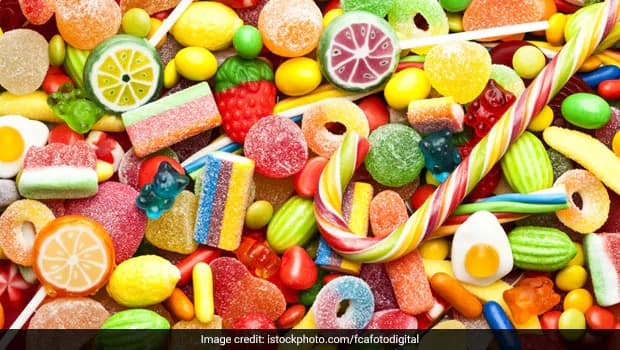
14 February, 2024
Decoding the Flavours: A Guide to Promotional Confectioneries
In the world of promotional products, confectioneries have proven to be a sweet success—literally. Whether it's branded chocolates, customised sweets, or logo-embossed cookies, these tasty items are universally appreciated. However, diving into the world of promotional confectioneries can be overwhelming, given the plethora of flavours, forms, and cultural considerations at play. This comprehensive guide aims to unravel the complexities, offering an in-depth look at how you can best utilise sweets to advance your brand.
Why Confectioneries?
Promotional confectioneries have multiple advantages. They offer universal appeal, are budget-friendly, and can be tailored to suit various occasions. Sweets evoke positive emotions, associating your brand with feelings of joy and indulgence. They also act as conversation starters, often shared among colleagues, family, or friends, thereby widening your brand's reach organically.
Traditional Vs. Trendy Flavours

1) Traditional Flavours
- Unbeatable Classics: For a good reason, traditional flavours are the cornerstone of promotional confectioneries. These flavours—milk chocolate, vanilla, and strawberry, to name a few—have proven their popularity over decades or even centuries. Their widespread appeal makes them ideal for a broad and diverse audience.
- Psychological Edge: There's something comforting about familiar tastes, and traditional flavours often evoke a sense of nostalgia. These flavours often remind people of their childhood or happy times, establishing an emotional connection that can be beneficial for brand perception.
- Ease of Production: They are usually straightforward to produce and source, making them a cost-effective option. They are also more likely to be available in various forms, from hard candies to chocolates and biscuits, offering greater flexibility in your choice of promotional products.
- Cultural Acceptance: These flavours are often universally accepted and transcend cultural barriers, making them suitable for international campaigns or diversified markets.
2) Trendy Flavours
- Novelty Factor: One of the primary advantages of trendy flavours like salted caramel, matcha, or lavender is their novelty. They immediately stand out and catch attention, giving your brand a contemporary, adventurous image.
- Targeted Marketing: They allow for highly targeted marketing efforts. Suppose your brand aims to attract a younger, more adventurous demographic, or you are launching a product that aligns with a 'modern' or 'innovative' identity. In that case, trendy flavours can help communicate that message effectively.
- Social Media Buzz: Unique and exciting flavours are more likely to be shared on social media platforms, providing additional promotional value. A well-executed one can go viral, thereby magnifying your brand's visibility without extra marketing spend.
- Customisation and Limited Editions: These flavours are perfect for limited-time offers or special editions, creating a sense of urgency and exclusivity. Brands can also collaborate with celebrity chefs or influencers to create custom flavours, adding another layer of appeal.
It's often worthwhile to offer a mix of both traditional and trendy flavours, catering to different tastes and preferences. While traditional flavours maintain broad appeal, including a few trendy options can attract a niche audience and generate buzz, providing a well-rounded promotional strategy.
By understanding both styles' merits and potential drawbacks, you can make a more informed decision on which to include in your promotional confectionery line-up, ensuring that your sweet treats resonate with your target audience.
Cultural Sensitivities and Local Preferences

In today's globalised market, brands have the opportunity to reach consumers across diverse geographies and cultures. This makes it critical to possess a nuanced understanding of local tastes and taboos, ensuring that your promotional confectioneries are both relatable and respectful to the target audience. Failing to do so could lead not only to low uptake but also to potential brand damage.
1) Geographical Taste Variations
Different regions have distinct taste preferences often shaped by their local food traditions. For instance, while certain European countries may have an affinity for salty liquorice, this flavour could be less appreciated or even disliked in places like the United States or Asia. Similarly, while green tea or matcha-flavoured sweets might be all the rage in Japan, they could be seen as too exotic or unfamiliar in other parts of the world.
2) Religious and Ethical Considerations
Certain ingredients may be unsuitable for potential consumers due to religious or ethical restrictions. For instance, confectioneries containing beef gelatin could be controversial in countries where cow consumption is restricted due to religious beliefs, such as India. Similarly, pork-derived gelatin would not be appropriate in Muslim-majority countries where pork is considered haram (forbidden).
3) Allergies and Health Concerns
Some regions have higher incidences of specific allergies or health concerns that need to be considered. Nut-free or gluten-free options might be more suitable for markets where these allergies are prevalent.
4) Legal Restrictions
Local regulations may also affect what you can and can't include. Certain additives or flavourings that are permitted in one country might be banned in another, making it essential to consult local food standards.
5) Consumer Ethical Preferences
There is a growing trend towards ethical consumerism in certain markets, where factors like Fair Trade certification, organic ingredients, and environmentally friendly packaging can significantly influence consumer choices.
6) The Safe Bet: Local Partnerships
One effective way to navigate these cultural intricacies is through partnerships with local businesses or consultants who have an in-depth understanding of regional preferences and restrictions. They can guide you in crafting a product that resonates with the local audience while aligning with your brand identity.
The Role of Packaging
Before a consumer even tastes your confectionery, they interact with its packaging. In a sense, the packaging serves as the "first impression" your brand will make, and as the old saying goes, you never get a second chance to make a first impression. Sleek, well-designed packaging can create anticipation, suggesting a high-quality, enjoyable product within.
1) Preservation of Quality
At its most basic level, the purpose of packaging is to preserve the quality of the product it contains. It protects the sweets from external factors such as moisture, air, and light, which can degrade the product's quality. Moreover, tamper-proof packaging also reassures consumers about the safety and integrity of the product.
2) Brand Identity and Storytelling
Your packaging is an extension of your brand identity and can tell a story about who you are. Whether you opt for minimalist design elements, vibrant colours, or a vintage aesthetic, ensure it aligns with your brand’s message and ethos. The typography, graphics, and even the material used can all be elements of storytelling that provide deeper engagement with your target audience.
3) Sustainability: The Eco-friendly Edge
Given growing environmental awareness, consumers are increasingly looking for sustainable options. Implementing eco-friendly packaging, such as compostable wrappers or reusable tins, appeals to these consumers and positions your brand as socially responsible. Plus, reusable packaging items like tins can continue to add value long after the confectionery is consumed, serving as a lasting reminder of your brand.
4) Multi-Sensory Experience
The texture, form factor, and even the sound the packaging makes when opened can contribute to a multi-sensory user experience. For instance, a smooth satin ribbon or embossed elements can add a tactile dimension, while a satisfying 'pop' when a tin is opened can delight the ears.
5) Seasonal or Limited Edition Themes
Limited edition or seasonal packaging can create a sense of urgency and exclusivity, compelling consumers to make a purchase. For example, a special festive wrapper for Christmas or a vibrant package to coincide with a popular sporting event can generate additional interest and sales.
6) Transparency and Information
In today’s informed world, consumers like to know what they are consuming. Nutritional information, ingredient lists, and even QR codes linking to more in-depth details can be valuable additions to packaging.
7) Budgetary Concerns
It's crucial to balance aesthetic desires and functionality with budget constraints. While high-end materials and elaborate designs can enhance appeal, they also drive up production costs, potentially affecting the retail price and consumer uptake.
Seasonal and Event-Specific Options

1) Christmas: Candy Canes
The festive period is ripe with opportunities for brand promotion through confectionery. Customised candy canes, a staple of Christmas festivities, can serve as excellent giveaways at company Christmas parties or client get-togethers. The traditional red and white can be adjusted to fit your brand's colour scheme, offering a unique twist on a holiday classic.
2) Valentine's Day: Heart-Shaped Chocolates
Valentine's Day offers a splendid opportunity to woo your customers and clients. Customised heart-shaped chocolates adorned with your brand logo not only celebrate the season of love but also show customer appreciation in the most delicious way. Whether distributed in-store, shipped as a gift, or handed out at special events, these branded delights can sweeten relationships.
3) Corporate Events: Branded Macarons
Corporate events often call for something a bit more sophisticated. Customised, elegantly boxed macarons featuring your brand's logo or message can bring a touch of elegance and refinement to any formal occasion. The macarons' colours can be adapted to fit your corporate palette, making them as much a visual treat as a culinary one.
4) Health-Conscious Alternatives
With a growing number of people prioritising their health, offering alternatives that cater to this demographic is increasingly important. Sugar-free sweets, dark chocolate, or organic fruit bars can be a considerate addition to your promotional confectionery lineup. These offer a more health-conscious choice without compromising taste, ensuring you reach an audience as broad as possible.
5) Halloween: Spooky Gummies
Halloween provides a unique promotional opportunity with its themes of spookiness and fun. Custom-branded gummies in the shapes of bats, ghosts, and pumpkins can add a playful touch to your marketing, capturing the imagination of both children and adults.
6) Easter: Customised Easter Eggs
Easter is synonymous with chocolate eggs, and this presents a perfect occasion for brand promotion. Customised Easter eggs, wrapped in foil featuring your brand logo or seasonal message, can be a hit among consumers. These can be distributed in retail settings, special events, or as part of a seasonal marketing campaign.
7) New Year: Champagne-Flavoured Truffles
The New Year is a time for celebration, and what better way to celebrate than with the taste of champagne? Champagne-flavoured truffles, enclosed in custom-branded packaging, can offer your clients and customers a luxurious start to the year. They serve as an ideal gift to thank people for their loyalty while ringing in the New Year.
Each of these seasonal and event-specific options allows you to tailor your promotional strategy to the occasion, offering something that resonates with the spirit of the event while aligning with your brand values.
Summary
Promotional confectioneries offer a delightful yet complex medium through which to express your brand's values, appeal to diverse audiences, and make a lasting impression. With careful consideration of flavours, cultural nuances, and packaging, these sugary treats can be a valuable addition to your promotional strategy. After all, a little sweetness goes a long way in leaving a taste of your brand in people's mouths.
The Confectionery Only Team
